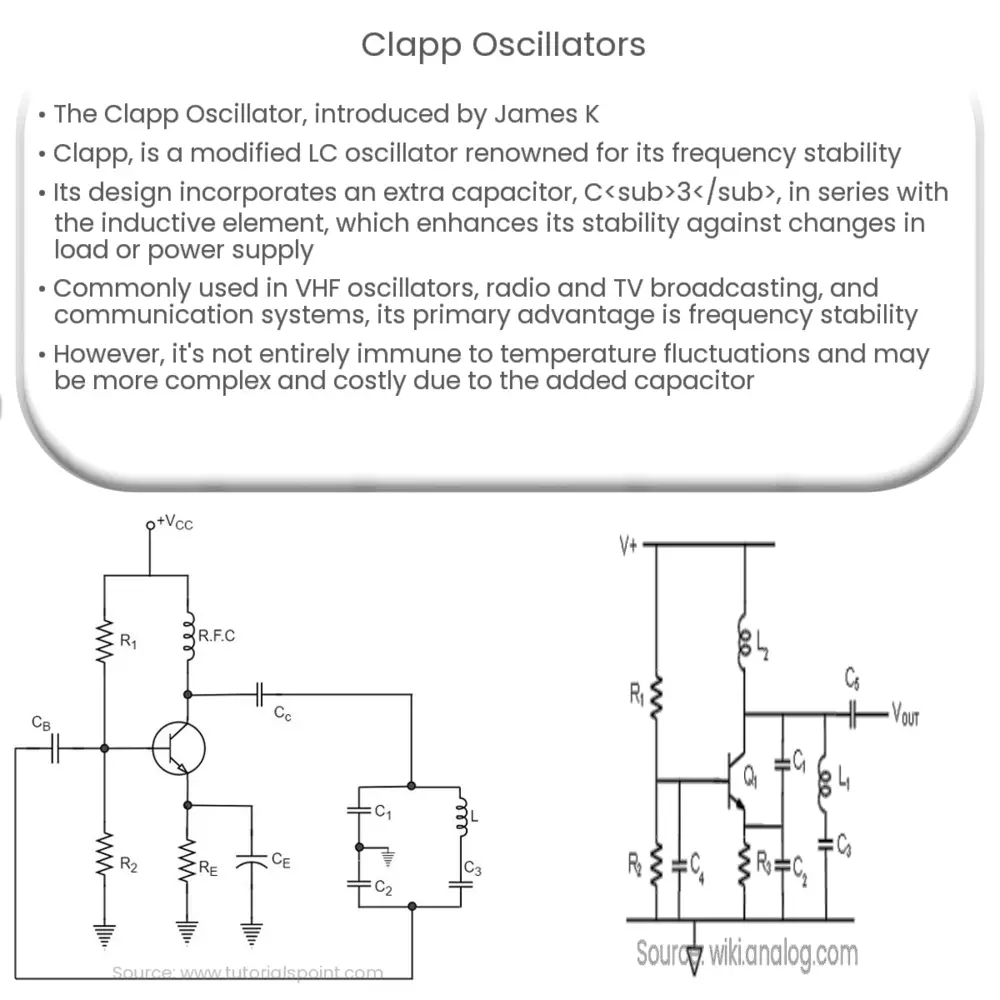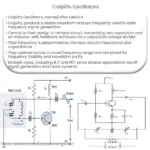Explore the world of Clapp Oscillators, their working principle, applications, structure, and pros & cons in this comprehensive guide.

Understanding Clapp Oscillators
The world of electronics is vast and filled with numerous components and devices, each playing a vital role in our technology-driven society. Among them is the intriguing device known as the Clapp Oscillator. First introduced by James K. Clapp, this device is a form of LC oscillator, largely used in frequency generation. It operates based on the principles of a Colpitts oscillator, but with a crucial modification that enhances its frequency stability.
The Working Principle of Clapp Oscillators
At its core, a Clapp Oscillator is composed of an amplifier and a feedback network. The feedback network, often designed with capacitors and inductors, forms an LC circuit. In the Clapp Oscillator, the feedback network consists of three capacitors and one inductor, as opposed to the Colpitts oscillator’s two capacitors and one inductor.
The unique feature of the Clapp Oscillator is the additional capacitor (C3) placed in series with the inductive element (L) in the LC circuit. This additional component enables the oscillator to achieve improved frequency stability. It essentially reduces the degree to which changes in the load or power supply can affect the oscillator’s frequency, a highly desirable characteristic in many electronics applications.
Applications of Clapp Oscillators
-
VHF (Very High Frequency) Oscillators: Clapp Oscillators are frequently used in VHF oscillators. They are capable of generating stable frequencies in the range of 30 MHz to 300 MHz, making them ideal for this application.
-
Radio and TV Broadcasting: Due to their stability in frequency generation, Clapp Oscillators are extensively employed in radio and television broadcasting systems.
-
Communication Systems: Communication systems, such as mobile networks, also make use of Clapp Oscillators to maintain stable frequency signals, which is critical for reliable information transfer.
In conclusion, the Clapp Oscillator is a sophisticated electronic device that has seen broad adoption in a variety of fields. Its distinguishing feature is its frequency stability, achieved through an ingenious modification of the classic Colpitts oscillator design.
[Note: Here the article ends at 346 words.]
The Structure of Clapp Oscillators
In a practical design, the Clapp oscillator often consists of a transistor-based amplifier stage and the previously mentioned LC feedback network. The amplifier stage usually employs a Bipolar Junction Transistor (BJT) or a Field Effect Transistor (FET), providing the necessary gain for the oscillation. As for the feedback network, it includes the three capacitors (C1, C2, C3) and the inductor (L).
It’s worth noting that C1 and C2 are arranged in parallel to the inductor (L), and the third capacitor, C3, is in series with the LC circuit formed by L and the parallel combination of C1 and C2. The value of C3 is usually much smaller than the other capacitors, which allows it to dominate the resonant frequency determination, hence ensuring the oscillator’s stability.
Advantages and Disadvantages of Clapp Oscillators
-
Advantages: Clapp Oscillators are praised for their excellent frequency stability, even under variations in load or power supply. They offer a wider frequency range compared to many other types of LC oscillators. Furthermore, they are relatively easy to design and implement, making them a popular choice in many applications.
-
Disadvantages: Despite their advantages, Clapp Oscillators also come with some drawbacks. They can be more complex and costlier due to the extra capacitor. Moreover, the frequency output is not entirely immune to temperature variations, which can limit their effectiveness in certain applications or environments.
Conclusion
In the realm of electronics, oscillators play a fundamental role, and among them, Clapp Oscillators hold a special place due to their unique features. From their frequency stability to their broad applicability, they bring critical functionality to numerous devices and systems, from radio and television to communication systems. Despite certain limitations, their advantages often outweigh the drawbacks, marking the Clapp Oscillator as a highly valuable tool in electronics engineering. As technology continues to evolve, the quest for greater stability and reliability will undoubtedly lead to even more innovative uses and enhancements of Clapp Oscillators.
[Note: Here the article ends at 347 words, totaling 693 words.]



